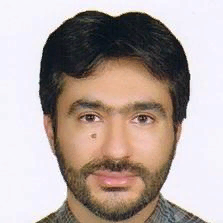International Journal of Image, Graphics and Signal Processing (IJIGSP)
IJIGSP Vol. 5, No. 3, 8 Mar. 2013
Cover page and Table of Contents: PDF (size: 751KB)
Facial Image Super Resolution Using Weighted Patch Pairs
Full Text (PDF, 751KB), PP.1-9
Views: 0 Downloads: 0
Author(s)
Index Terms
Face Hallucination, Super Resolution, Image Patches, PSNR and SSIM
Abstract
A challenging field in image processing and computer graphics is to have higher frequency details by super resolving facial images. Unlike similar papers in this field, this paper introduces a practical face hallucinating approach with higher quality output images. The image reconstruction was based on a set of high and low resolution image pairs. Each image is divided into defined patches with overlapped regions. A patch from a defined location is removed from the low resolution (LR) input image and is compared with the LR patches of the training images with the same location. Each defined LR patch has a defined high resolution (HR) patch. Based on the Euclidean distance comparison, each patch of every single image in the training images database receives a specific weight. This weight is transferred to its relevant HR patch identically. The sum of the gained weights for one specific location of a patch is equal to unity. The HR output image is constructed by integrating the HR hallucinated patches.
Cite This Paper
Payman Moallem, Sayed Mohammad Mostafavi Isfahani, Javad Haddadnia,"Facial Image Super Resolution Using Weighted Patch Pairs", IJIGSP, vol.5, no.3, pp.1-9, 2013. DOI: 10.5815/ijigsp.2013.03.01
Reference
[1]B. Tom and A. Katsaggelos, "Resolution enhancement of monochrome and color video using motion compensation," IEEE Trans. Image Process., vol. 10, no. 2, pp. 278–287, Feb. 2001.
[2]W. Liu, D. Lin, and X. Tang, "Neighbor combination and transformation for hallucinating faces," in Proc. IEEE Conf. Multimedia and Expo, Amsterdam, The Netherlands, Jul. 2005, pp. 145–148.
[3]S. Baker and T. Kanade, "Hallucinating Faces," in Proc. of Inter. Conf. on Automatic Face and Gesture Recognition, pp. 83-88, 2000.
[4]S. Baker and T. Kanade. Limits on super-resolution and how to break them. IEEE Transactions on Pattern Analysis and Machine Intelligence, 24(9):1167–1183, 2002
[5]M.-H. Yang, D. J. Kriegman, and N. Ahuja, "Detecting faces in images: A survey," IEEE Trans. Pattern Anal. Mach. Intell., vol. 24, no. 1, pp. 34–58, Jan. 2002.
[6]P. Kakumanua, S. Makrogiannisa, and N. Bourbakis, "A survey of skin-color modeling and detection methods," Pattern Recognit., vol. 40, no. 3, pp. 1106–1122, Mar. 2007.
[7]W. T. Freeman, T. R. Jones, and E. C. Pasztor, "Example-Based Super-Resolution," IEEE Comput. Graph. Appl., vol. 22, no. 2, pp. 56-65, 2002.
[8]C. Liu, H. Shum, and C. Zhang, "A Two-Step Approach to Hallucinating Faces: Global Parametric Model and Local Nonparametric Model," in Proc. of CVPR, Vol. 1, pp. 192- 198, 2001.
[9]W.Liu,D.H.Lin,X.O.Tang,Hallucinating faces: Tensor Patch super-resolution and coupled residue compensation,in Proceedings of the IEEE Computer Society Conference on Computer Vision and Pattern Recognition,United States, 2005,pp.478–484.
[10]H. Chang, D. Y. Yeung, and Y. Xiong, "Super-resolution through neighbor embedding," in Proc. IEEE Conf. Computer Vision and Pattern Recognition, 2004, pp. 275–282.
[11]X. Wang and X. Tang, "Hallucinating face by eigentransformation," to appear in IEEE Trans. on Systems, Man, and Cybernetics, Part-C, Special issue on Biometrics Systems, 2005.
[12]J. S. Park and S. W. Lee. An example-based face hallucination method for single-frame, low-resolution facial images. IEEE Transactions on Image Processing, 17(10):1806–1816,2008.
[13]P. Mortazavian, J.V Kittler, W.J. Christmas, "3D-Assisted Facial Texture Super-resolution", BMVC09 xx-yy 2009
[14]P. S. Penev, and L. Sirovich, "The Global Dimensionality of Face Space," Proc. of IEEE International Conference on Automatic Face and Gesture Recognition, pp. 264-270, 2000.
[15]Z. Wang, A. C. Bovik, H. R. Sheikh, and E. P. Simoncelli. Image quality assessment: From error visibility to structural similarity. IEEE Trans. on Image Processing, 27(4):619– 624, 2005.
